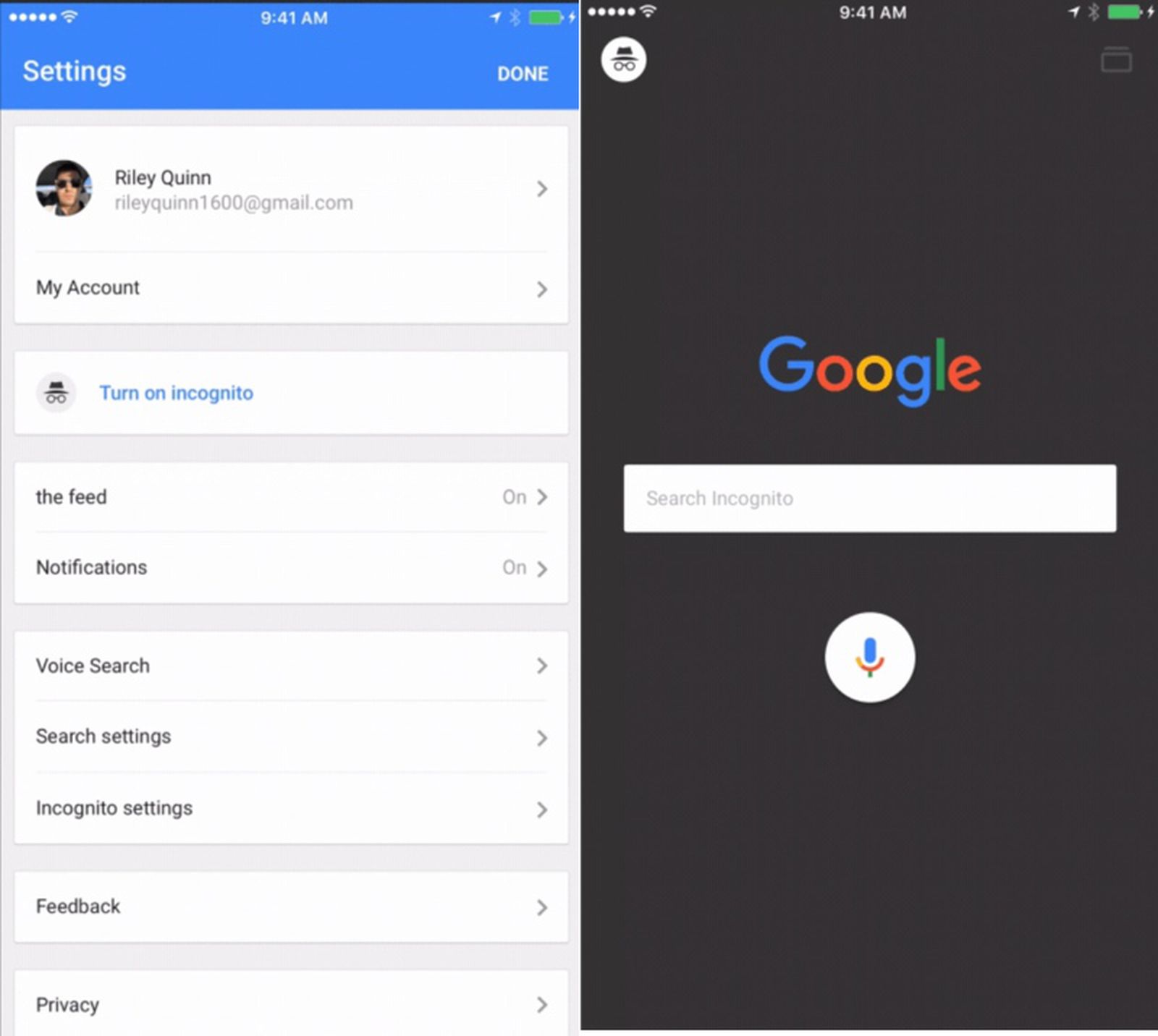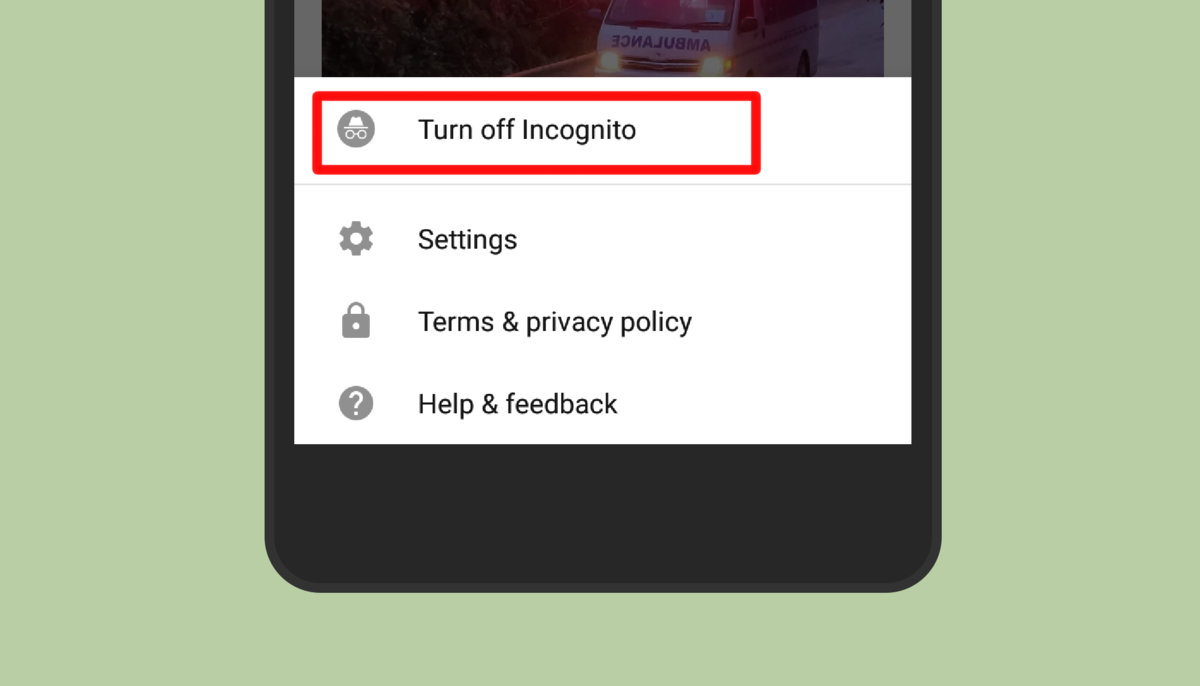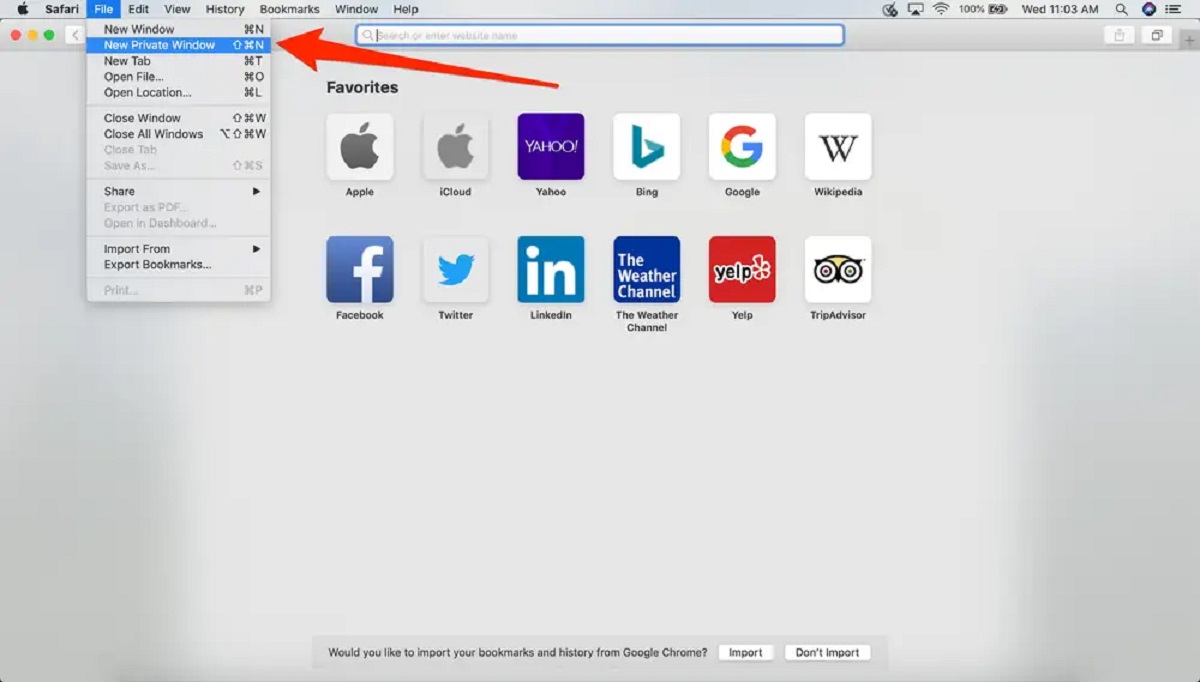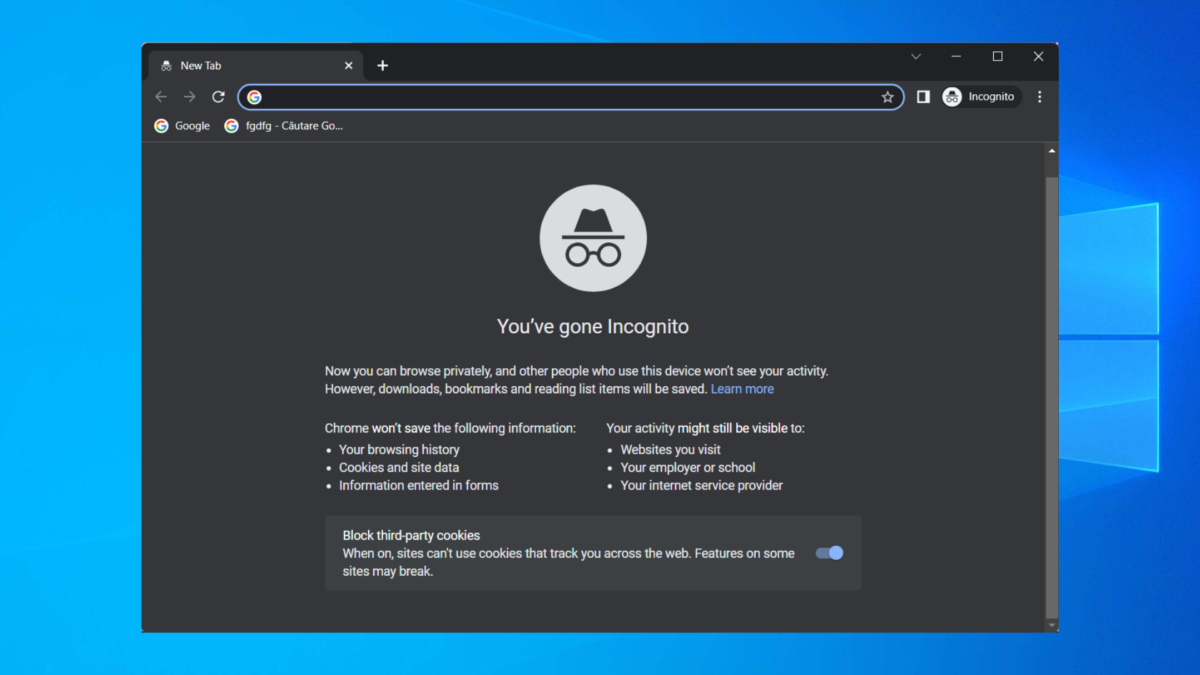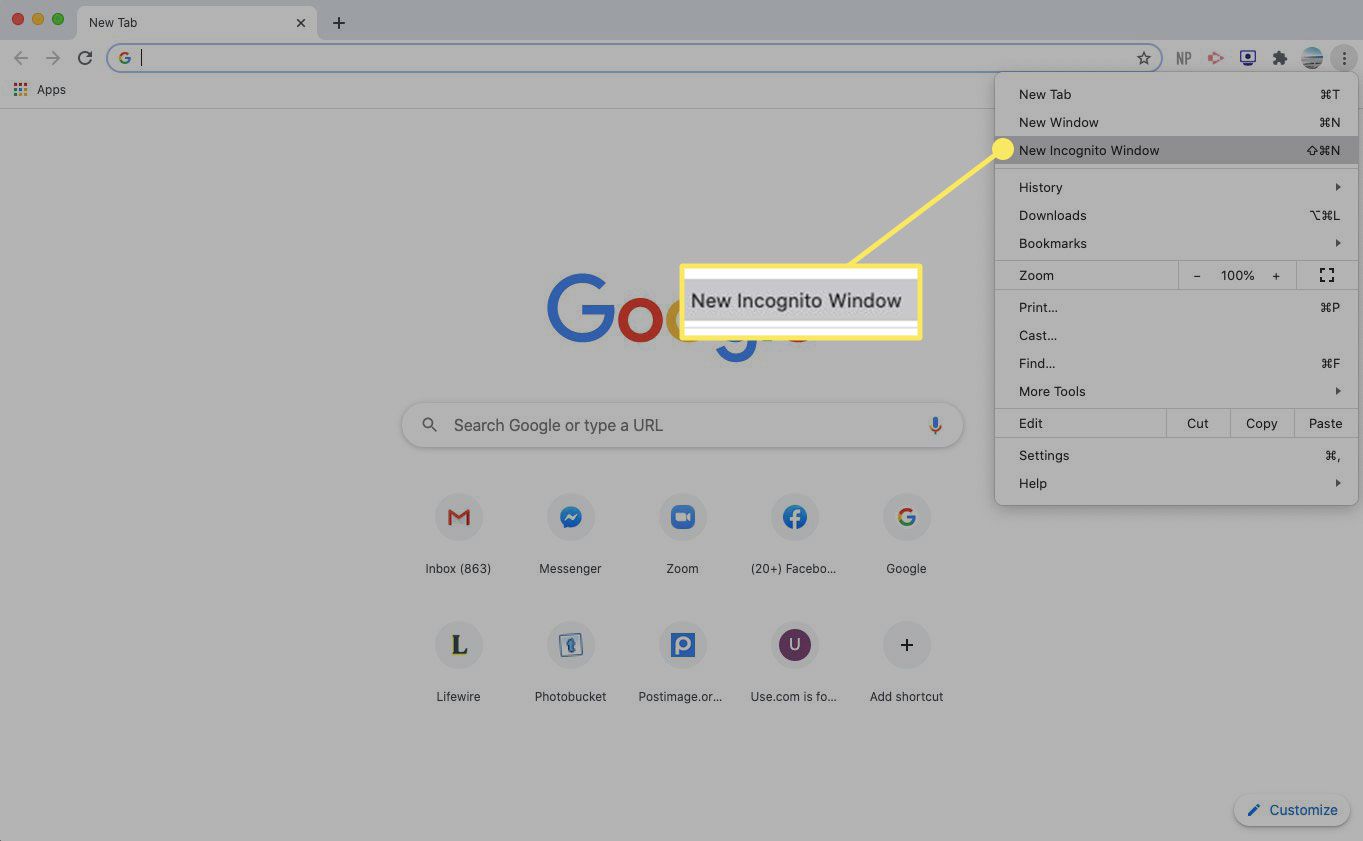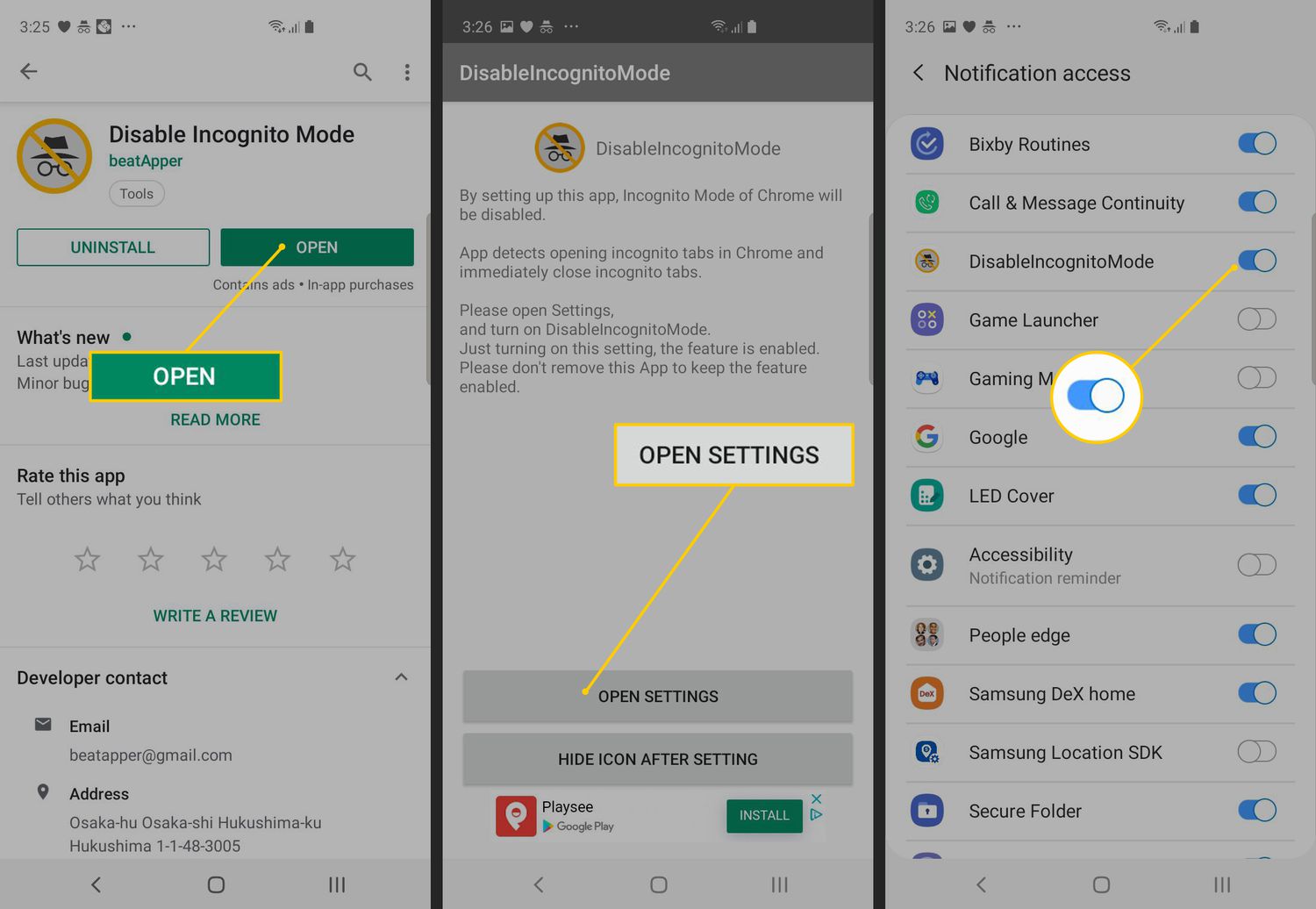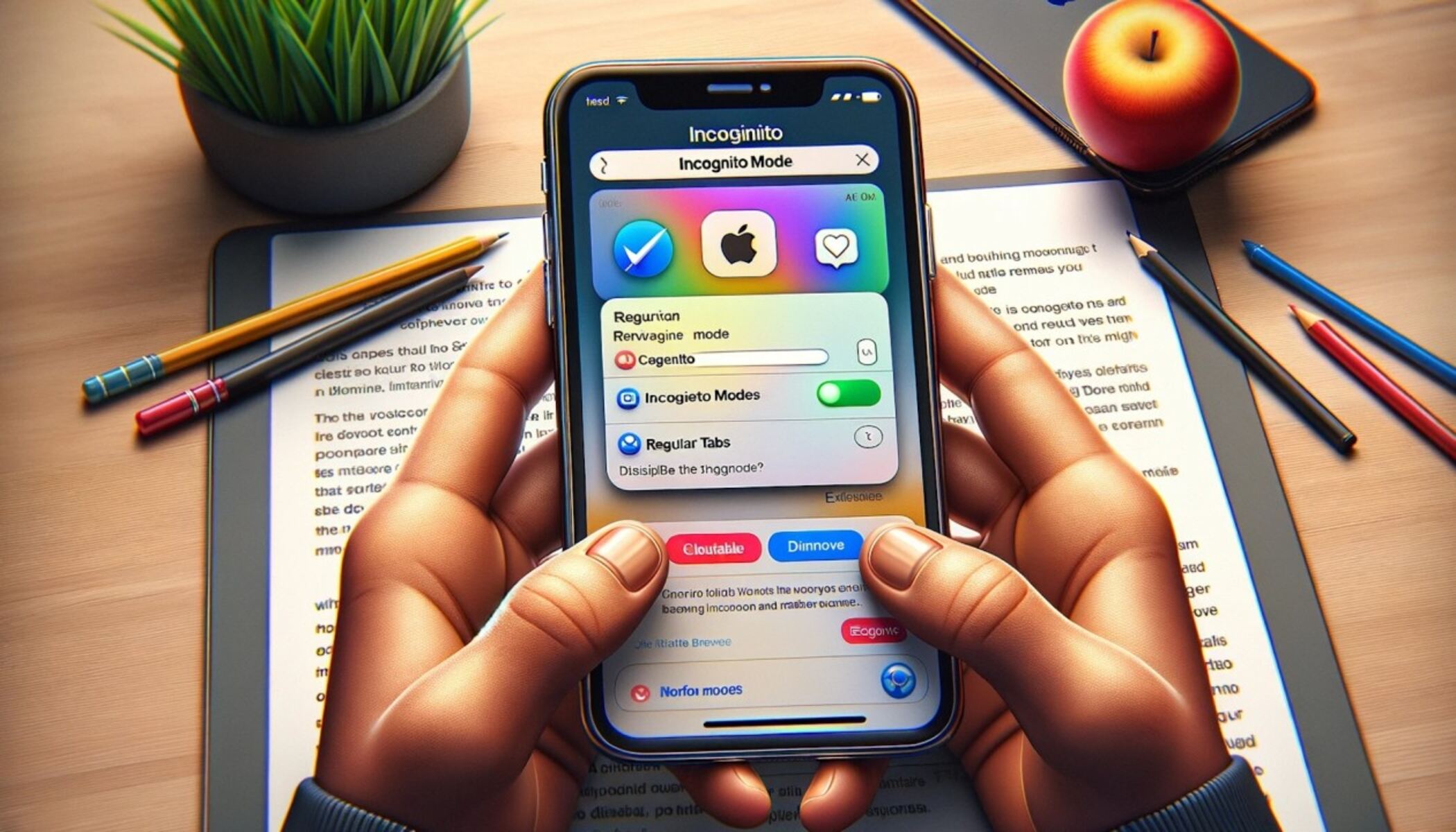Introduction
Welcome to the world of private browsing! In this digital era, where online privacy is of paramount importance, using tools that provide enhanced security and confidentiality is crucial. One such tool that comes to our rescue is the Incognito Mode, a browsing feature offered by Google Chrome. Whether you want to keep your search history confidential, prevent websites from tracking your data, or simply want to maintain a separate browsing session, Incognito Mode has got you covered.
Incognito Mode, also known as private browsing, allows users to surf the web without leaving a trace of their activity on the device they are using. It provides a temporary browsing session that doesn’t store browsing history, cookies, or any other website data. Once you close the Incognito window, all the information associated with that session is deleted, ensuring your privacy remains intact.
While Incognito Mode provides a layer of privacy, it’s important to note that it doesn’t make you completely anonymous online. Your internet service provider, employer, or any other entity monitoring your network can still see your browsing activity. However, it can help protect your privacy from others who may have access to your device.
In this article, we will guide you through the various methods you can use to access Incognito Mode on Google Chrome, both on desktop and mobile devices. We will also explore how to use Incognito Mode on other Google services such as Google Drive, Google Maps, and even the Google Search App. So, let’s dive in and discover how you can browse the web with added privacy and security!
What is Incognito Mode?
Incognito Mode, also referred to as private browsing or privacy mode, is a feature available in Google Chrome that allows users to browse the internet without leaving behind a digital trail of their online activities. When you use the Incognito Mode, your browsing history, cookies, site data, and information entered in forms are not saved on your device. This ensures that subsequent users of the device or anyone with access to it won’t be able to see your browsing history or personal information.
While using Incognito Mode, your online activity is not completely private. Your internet service provider, employer, or any network administrator can still see your browsing activity. Additionally, websites that you visit can track your IP address and gather information. However, Incognito Mode prevents this information from being stored locally on your device.
Entering Incognito Mode on Google Chrome allows you to browse without signing out of your Google account or disrupting your regular browsing experience. It creates a separate browsing session with a distinctive icon—a man wearing a hat and sunglasses—indicating that you are in Incognito Mode. This feature is particularly useful if you are using a shared device, such as a public computer or a friend’s laptop, and you want to maintain your privacy.
While in Incognito Mode, certain features are disabled to ensure the privacy of your browsing session. For example, extensions that you have installed in Chrome may be disabled as they may collect browsing data. Additionally, websites may prompt you to sign in or provide authentication even if you were signed in on a regular browsing session.
It’s worth noting that Incognito Mode works locally on your device and does not protect your browsing activity from being tracked by other means, such as by the websites you visit or your internet service provider. Therefore, if you require a higher level of anonymity or privacy, you may need to consider using other tools or technologies like Virtual Private Networks (VPNs) or Tor.
Why Use Incognito Mode?
Incognito Mode offers several benefits that make it a useful tool for certain browsing scenarios. Here are some reasons why you may want to consider using Incognito Mode:
1. Privacy: The primary benefit of Incognito Mode is the enhanced privacy it provides. By not storing your browsing history, cookies, or other website data, it helps prevent your online activities from being accessible to others who have access to your device.
2. Confidentiality: Incognito Mode ensures that any information you enter in forms or search queries is not saved in your browser’s history. This feature can be particularly helpful when performing sensitive tasks online, such as researching personal health information or making financial transactions.
3. Multiple Account Management: If you have multiple Google accounts, Incognito Mode allows you to sign in to a different account without signing out of your primary account. This makes it convenient for managing separate profiles, such as personal and work accounts, without the need to constantly log in and out.
4. Bypassing Paywalls: Some websites have paywalls that limit access to their content. By using Incognito Mode, you may be able to surpass these limits as it does not store cookies, which are often used to track the number of articles you have accessed.
5. Testing Websites: Web developers and designers can utilize Incognito Mode to test websites without interference from cached files or previously stored data. This allows them to view a website as a new user would, providing a fresh perspective on any potential issues.
6. Surprise-free Recommendations: When browsing in Incognito Mode, websites and online services are less likely to use your browsing history to personalize content or recommendations. This can be useful if you want to see unbiased search results or recommendations based on a new topic or interest.
7. Maintaining Online Integrity: Incognito Mode allows you to browse without leaving traces on shared devices, minimizing the risk of accidentally sharing personal information or browsing habits with others.
While Incognito Mode provides additional privacy and convenience, it is important to note that it does not make you completely anonymous online. Other methods, such as using a VPN, may be necessary if you require a higher level of anonymity.
In the next sections, we will explore how to access Incognito Mode on Google Chrome, as well as on other Google services like Google Drive, Google Maps, and the Google Search App. So, let’s get started and learn how to browse the web with added privacy and security!
How to Access Incognito Mode on Google Chrome
Accessing Incognito Mode on Google Chrome is a straightforward process. Follow the steps below to start browsing privately:
1. Using Keyboard Shortcuts: Press Ctrl + Shift + N (Windows) or Command + Shift + N (Mac) simultaneously. This will open a new Incognito window.
2. Using the Menu: Click on the three-dot menu icon located in the top-right corner of the Chrome browser window. From the dropdown menu, select “New Incognito Window”. A new Incognito window will open, ready for private browsing.
3. Using the Address Bar: Open a regular Chrome window and type “chrome://settings” in the address bar. Press Enter to open the Chrome settings page. Scroll down to find the “Privacy and security” section, then click on “Incognito mode”. Toggle the switch to enable Incognito mode. Once enabled, you can easily switch to Incognito mode by clicking on the three-dot menu icon and selecting “New Incognito Window”.
4. Using the Chrome Taskbar Icon (Windows Only): Right-click on the Google Chrome taskbar icon and select “New Incognito Window” from the dropdown menu. This will open a new Incognito window for private browsing.
Once you’re in Incognito Mode, a new window with a dark theme and a detective-like icon will appear. From this point on, any websites you visit, search queries you make, or personal information you enter will not be saved.
It’s important to note that while Incognito Mode prevents Chrome from storing your browsing information locally, it does not make you completely anonymous online. Your internet service provider, employer, or any network administrator can still track your browsing activity. Additionally, websites you visit may collect information about your visit, including your IP address.
In the next sections, we will explore how to access Incognito Mode on Google Chrome for mobile devices, as well as on other Google services like Google Drive, Google Maps, and the Google Search App. So, let’s continue and discover how to browse securely on various platforms!
How to Access Incognito Mode on Google Chrome (Mobile)
Accessing Incognito Mode on Google Chrome for mobile devices is a simple and convenient process. Follow the steps below to start browsing privately on your smartphone or tablet:
1. Using the Menu: Open the Google Chrome app on your mobile device. Tap on the three-dot menu icon located in the top-right corner of the screen. From the menu that appears, select “New Incognito Tab”. A new Incognito tab will open, ready for private browsing.
2. Using the Tab Switcher: With the Chrome app open, tap on the tab switcher icon located at the top-right corner of the screen. This icon typically looks like a square or a stack of cards. In the tab switcher view, tap on the “+” (plus) icon in the bottom-left corner. This will open a new tab, which will be in Incognito Mode by default.
3. Using the Address Bar: Open the Chrome app and tap on the address bar at the top of the screen. In the address bar, type “chrome://flags” and press Enter. This will open the experimental features page. Scroll down to find the “Enable Incognito New Tab Page” option and tap on the dropdown menu next to it. Select “Enabled”. After enabling this feature, you can open a new Incognito tab directly from the address bar by tapping on the Incognito icon (hat and sunglasses) that appears.
4. Using the App Settings: Open the Chrome app, tap on the three-dot menu icon, and select “Settings”. In the Settings menu, tap on “Privacy” followed by “Incognito Mode”. Toggle the switch to enable Incognito Mode. Once enabled, you can access Incognito Mode by tapping on the three-dot menu icon and selecting “New Incognito Tab”.
Once you’re in Incognito Mode on Google Chrome for mobile, you will notice that the interface changes to a darker color scheme to indicate that you’re browsing privately. Any websites you visit, search queries you make, or personal information you enter will not be saved.
Remember that Incognito Mode on mobile devices provides privacy from other users of the device but does not make your online activities completely anonymous. Your internet service provider, employer, or any network administrator may still be able to track your browsing activity. Additionally, websites you visit may collect information about your visit, including your IP address.
In the next sections, we will explore how to access Incognito Mode on other Google services such as Google Search App, Google Drive, Google Maps, and Google Assistant. So, let’s continue and discover how to maintain your privacy across different Google platforms!
How to Access Incognito Mode on Google Chrome (Desktop)
Accessing Incognito Mode on Google Chrome is quick and easy on desktop computers. Follow the steps below to start browsing privately on your Windows or Mac:
1. Using Keyboard Shortcuts: Press Ctrl + Shift + N (Windows) or Command + Shift + N (Mac) simultaneously. This will open a new Incognito window.
2. Using the Menu: Click on the three-dot menu icon located in the top-right corner of the Chrome browser window. From the dropdown menu, select “New Incognito Window”. A new Incognito window will open, ready for private browsing.
3. Using the Address Bar: Open a regular Chrome window and type “chrome://settings” in the address bar. Press Enter to open the Chrome settings page. Scroll down to find the “Privacy and security” section, then click on “Incognito mode” to toggle the switch and enable Incognito mode. Once enabled, you can easily switch to Incognito mode by clicking on the three-dot menu icon and selecting “New Incognito Window”.
4. Using the Taskbar Icon (Windows Only): Right-click on the Google Chrome taskbar icon and select “New Incognito Window” from the dropdown menu. This will open a new Incognito window for private browsing.
Once you activate Incognito Mode, a new window with a dark theme will appear, and a detective-like icon will indicate that you are browsing privately. In this mode, Chrome will not store your browsing history, cookies, or any other website data. Additionally, any changes you make during your Incognito session, such as bookmarks or downloads, will be saved and visible on your regular browsing profile.
It’s important to note that while Incognito Mode prevents Chrome from storing your browsing information locally, it does not make you completely anonymous online. Your internet service provider, employer, or any network administrator can still track your browsing activity. Additionally, websites you visit may collect information about your visit, including your IP address.
In the upcoming sections, we will explore how to access Incognito mode on other Google services like Google Search App, Google Drive, Google Maps, and Google Assistant, allowing you to maintain your privacy and security across the Google ecosystem. So, let’s continue and discover how to protect your online activities on various platforms with ease!
How to Access Incognito Mode on Google Search App (Mobile)
Accessing Incognito Mode on the Google Search App for mobile devices is a simple process that allows you to search the web privately and securely. Follow the steps below to enable Incognito Mode on the Google Search App:
1. Open the Google Search App: Locate the Google Search App on your mobile device’s home screen or app drawer, and tap on it to open the app.
2. Tap on Your Profile Icon: Look for your profile icon in the top-right corner of the Google Search App. It is usually an avatar or the first initial of your name. Tap on the profile icon to access the account options.
3. Select “Turn on Incognito”: In the account options menu, you will see a list of available actions. Find and tap on the option labeled “Turn on Incognito”. This will activate Incognito Mode for your searches.
4. Start Searching: Once you have enabled Incognito Mode, a message will appear indicating that you are now in private browsing mode. You can start searching the web using the Google Search App while your search history and other browsing data will not be saved.
It’s important to note that enabling Incognito Mode on the Google Search App only applies to your search activity within the app itself. Your other internet activities or interactions with other apps on your device will not be affected by this setting.
By using Incognito Mode in the Google Search App, you can maintain your privacy and keep your search history confidential, especially if you are using a shared or public device.
In the next sections, we will explore how to access Incognito Mode on other Google services, including Google Drive, Google Maps, and Google Assistant, providing you with a comprehensive understanding of how to protect your privacy across various Google platforms. So, let’s continue exploring and discover more ways to browse securely on mobile devices!
How to Access Incognito Mode on Google Search App (iPhone and iPad)
Accessing Incognito Mode on the Google Search App for iPhone and iPad is a straightforward process that allows you to browse the web privately and securely. Follow the steps below to enable Incognito Mode on the Google Search App:
1. Open the Google Search App: Locate the Google Search App on your iPhone or iPad’s home screen and tap on it to open the app.
2. Tap on Your Profile Icon: Look for the profile icon in the top-right corner of the Google Search App. It is usually represented by your profile picture or the first initial of your name. Tap on the profile icon to access the account options.
3. Select “Turn on Incognito”: In the account options menu, you will see a list of available actions. Look for and tap on the option labeled “Turn on Incognito”. This will activate Incognito Mode for your searches.
4. Start Searching: Once you have enabled Incognito Mode, a message will appear confirming that you are now in private browsing mode. You can start searching the web using the Google Search App while your search history and other browsing data will not be saved.
Enabling Incognito Mode in the Google Search App on your iPhone or iPad allows you to keep your search activity private, even if you are using a shared or public device. Keep in mind that this setting applies only to search activity within the app itself. Other internet activities or interactions with other apps on your device will not be affected by turning on Incognito Mode in the Google Search App.
By using Incognito Mode, you can search the web without your searches being saved in your account history or influencing personalized search results. This is particularly useful when you want to keep your search intentions private or if you need to perform sensitive searches.
In the following sections, we will explore how to access Incognito Mode on other Google services, such as Google Drive, Google Maps, and Google Assistant, providing you with a comprehensive understanding of how to protect your privacy across various Google platforms. So, let’s continue exploring and discover more ways to maintain your online privacy on iPhone and iPad devices!
How to Access Incognito Mode on Google Search App (Android)
Accessing Incognito Mode on the Google Search App for Android devices is a simple process that allows you to search the web privately and securely. Follow the steps below to enable Incognito Mode on the Google Search App:
1. Open the Google Search App: Locate the Google Search App icon on your Android device’s home screen or app drawer, and tap on it to open the app.
2. Tap on Your Profile Icon: Look for your profile icon in the top-right corner of the Google Search App. It is usually represented by your profile picture or the first initial of your name. Tap on the profile icon to access the account options.
3. Select “Turn on Incognito”: In the account options menu, you will see a list of available actions. Find and tap on the option labeled “Turn on Incognito”. This will activate Incognito Mode for your searches.
4. Start Searching: Once you have enabled Incognito Mode, a message will appear confirming that you are now in private browsing mode. You can start searching the web using the Google Search App while your search history and other browsing data will not be saved.
Enabling Incognito Mode on the Google Search App for Android allows you to maintain your privacy and keep your search history confidential. This is particularly useful when using a shared or public device, as it helps prevent your search activity from being visible to other users.
It is important to note that enabling Incognito Mode within the Google Search App applies to your search activity performed through the app only. Other activities or interactions with other apps on your Android device will not be affected by turning on Incognito Mode in the Google Search App.
By utilizing Incognito Mode, you can search the web without leaving a trail of your search history or influencing personalized search results. This can be beneficial when you want to keep your search intentions private or if you need to perform searches that require an added level of anonymity.
In the upcoming sections, we will explore how to access Incognito Mode on other Google services, such as Google Drive, Google Maps, and Google Assistant, providing you with a comprehensive understanding of how to protect your privacy across various Google platforms on your Android device. So, let’s continue exploring and discover more ways to maintain your online privacy!
How to Access Incognito Mode on Google Drive
Accessing Incognito Mode on Google Drive allows you to work on your files and documents without leaving a trace of your activity in your account. Follow the steps below to access Incognito Mode on Google Drive:
1. Open Google Drive: Launch your web browser and go to drive.google.com. Sign in with your Google account if necessary.
2. Click on Your Profile Picture: In the top-right corner of the Google Drive interface, you will see your profile picture or avatar. Click on it to open the account dropdown menu.
3. Click on “Turn on Incognito”: In the account dropdown menu, you will find an option labeled “Turn on Incognito” or “Turn on Confidential Mode”. Click on it to activate Incognito Mode in Google Drive.
4. Start Working in Incognito Mode: Once you have enabled Incognito Mode, a message will appear indicating that your activity in Google Drive is not being saved. You can now work on your files, create new documents, or collaborate with others without leaving any history in your Google Drive account.
5. Exit Incognito Mode: To exit Incognito Mode and return to regular mode, simply click on your profile picture again and select the option to “Turn off Incognito” or “Turn off Confidential Mode”. Your files and documents will now be saved in your account.
Using Incognito Mode on Google Drive can be particularly useful if you are working on sensitive or confidential documents that you do not want to appear in your file history. It allows you to maintain privacy and work discreetly without the worry of leaving traces of your activity in your account.
Remember that Incognito Mode in Google Drive only applies to your activity within the Drive platform. It does not make your files private to others if they have access to them through other means or if they have been shared with others.
In the following sections, we will explore how to access Incognito Mode on other Google services, including Google Maps and Google Assistant, providing you with a comprehensive understanding of how to protect your privacy across different Google platforms. So, let’s continue exploring and discover more ways to safeguard your privacy while using Google services!
How to Access Incognito Mode on Google Maps
Accessing Incognito Mode on Google Maps allows you to explore and navigate without leaving a trace of your activity in your Maps history. Follow the steps below to access Incognito Mode on Google Maps:
1. Open the Google Maps App: Locate the Google Maps app on your mobile device’s home screen or app drawer. Tap on it to open the app.
2. Tap on Your Profile Icon: Look for your profile icon in the top-right corner of the Google Maps app. It is usually represented by your profile picture or the first initial of your name. Tap on the profile icon to open the menu.
3. Select “Turn on Incognito Mode“: In the menu, you will find an option labeled “Turn on Incognito Mode. Tap on it to activate Incognito Mode in Google Maps.
4. Start Exploring in Incognito Mode: Once you have enabled Incognito Mode, a message will appear confirming that your activity in Google Maps is not being saved. You can now explore and navigate without any of your activity being recorded in your Maps history.
5. Exit Incognito Mode: To exit Incognito Mode and return to regular mode, simply tap on your profile icon again and select the option to “Turn off Incognito Mode. Your Maps activity will be recorded in your Maps history as usual.
Enabling Incognito Mode on Google Maps allows you to have a private and personalized experience while using the app. It ensures that your searches, directions, and exploration of places do not get linked to your account or affect personalized recommendations.
While in Incognito Mode, Google Maps will not save your search queries, locations you have searched for, or any other browsing activity. It also prevents your location information from being stored in your Google account and associated services. However, keep in mind that other applications or services using your device’s location services may still have access to your location data.
In the upcoming sections, we will explore how to access Incognito Mode on other Google services like Google Assistant, providing you with a comprehensive understanding of how to protect your privacy across multiple Google platforms. So, let’s continue exploring and discover more ways to secure your privacy while using Google services!
How to Access Incognito Mode on Google Assistant
Accessing Incognito Mode on Google Assistant allows you to interact with the virtual assistant without your queries or commands being saved to your account. Follow the steps below to access Incognito Mode on Google Assistant:
1. Activate Google Assistant: Open the Google Assistant on your device by either saying “Hey Google” or by tapping on the Google Assistant icon, typically located on the home screen or in the app drawer.
2. Issue the Command: Once Google Assistant is activated, say or type the command “Go incognito” or “Turn on Incognito Mode”. Google Assistant will respond and confirm that Incognito Mode is now active.
3. Interact in Incognito Mode: While in Incognito Mode, you can ask questions, request information, or perform tasks with the assurance that your interactions will not be saved to your account or used to personalize your Google Assistant experience.
4. Exit Incognito Mode: To exit Incognito Mode and return to regular mode, issue the command “Turn off Incognito Mode” or “Exit Incognito Mode”. Google Assistant will respond to confirm that you are back in the standard mode.
Enabling Incognito Mode on Google Assistant is particularly useful for those situations where you want to maintain the privacy of your interactions. It allows you to ask questions or perform tasks without worrying about your queries being saved in your account history. It can be beneficial when you need to search for sensitive information or when you simply prefer not to have your interactions tied to your account.
While in Incognito Mode, Google Assistant will not save your conversations, commands, or any other information to your account. However, it’s important to note that interactions with other devices or services linked to your account, such as smart home devices or third-party applications, may still be recorded or logged separately.
In the previous sections, we explored how to access Incognito Mode on various Google services, including Google Search App, Google Drive, Google Maps, and Google Assistant. By utilizing these features, you can enhance your privacy and maintain confidential browsing experiences across different platforms. So, let’s continue exploring and discover more ways to ensure your privacy while utilizing Google services!
Conclusion
In this digital age, where online privacy is a significant concern, utilizing tools like Incognito Mode can help protect your sensitive information and provide a more secure browsing experience. Whether you’re using Google Chrome, Google Search App, Google Drive, Google Maps, or Google Assistant, accessing Incognito Mode can offer you increased privacy, prevent your browsing history from being saved, and limit personalized tracking.
Incognito Mode ensures that your browsing activity, search history, and other website data are not stored on your device. This feature can be especially useful when using shared or public devices, as it allows you to browse privately and leave no traces of your online activities behind.
However, it’s important to note that while Incognito Mode provides a layer of privacy, it does not make you completely anonymous online. Your internet service provider, employer, or network administrator may still be able to track your browsing activity. Additionally, websites you visit can collect information through other means, such as your IP address.
In this article, we have explored how to access Incognito Mode on various Google services. We discussed the steps to enable Incognito Mode on Google Chrome, both on desktop and mobile devices, as well as on the Google Search App, Google Drive, Google Maps, and Google Assistant. By utilizing these features, you can have greater control over your privacy and enjoy a more secure online experience.
Remember that while Incognito Mode is a helpful tool for protecting your privacy, it’s essential to practice good internet security habits. This includes being cautious of the websites you visit, using strong and unique passwords, keeping your software up to date, and being mindful of the information you share online.
By combining Incognito Mode with other privacy-enhancing measures, such as using Virtual Private Networks (VPNs) and being mindful of the permissions you grant to apps and services, you can take further steps towards safeguarding your online privacy.
So, embrace the power of Incognito Mode and take control of your online privacy. Whether you’re conducting sensitive research, managing multiple accounts, or simply want a more private browsing experience, Incognito Mode provides a valuable tool for protecting your data and maintaining your confidentiality while using Google services.







